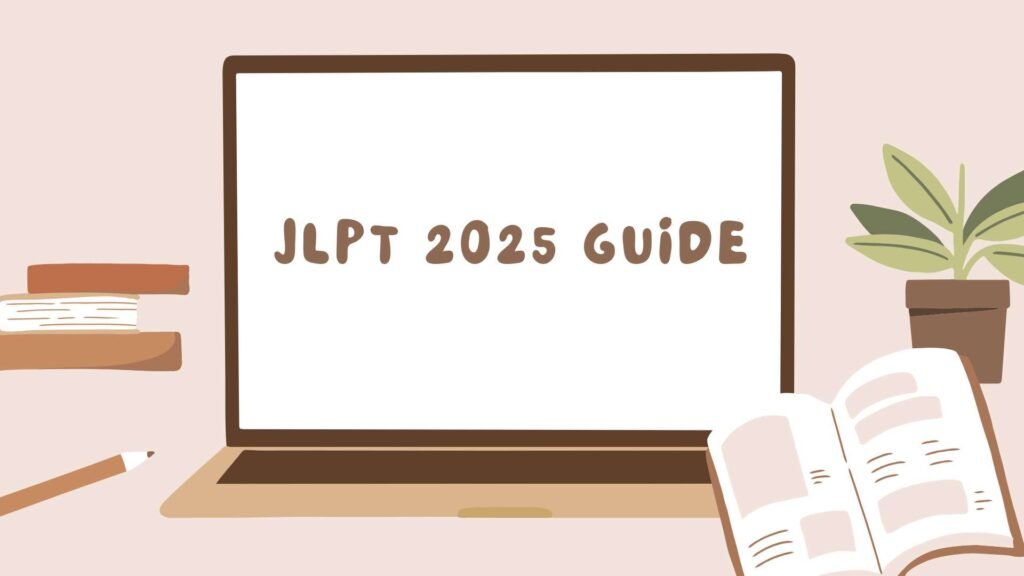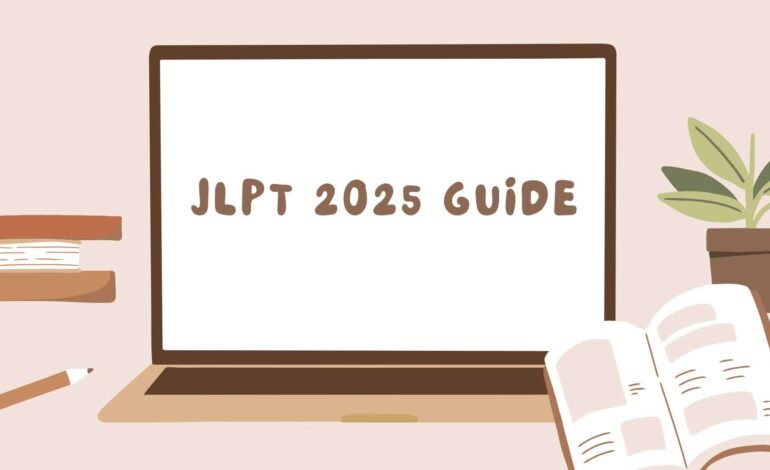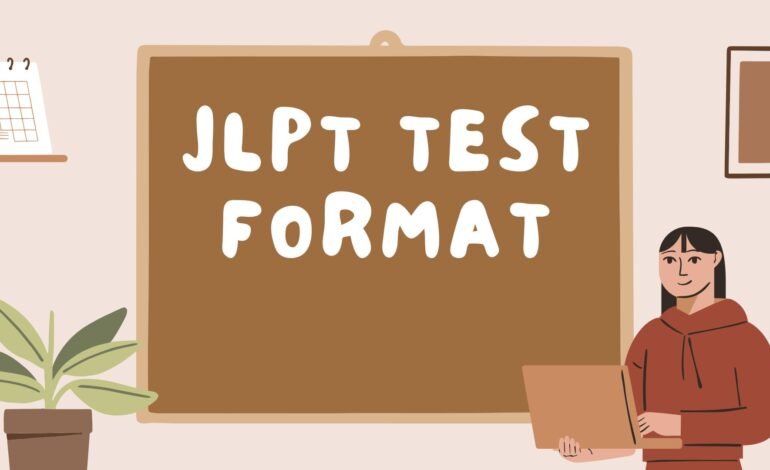If you’re passionate about the Japanese language or planning to build a career in Japan, you’ve probably heard about the JLPT (Japanese-Language Proficiency Test). Recognized globally, the JLPT is the benchmark test that evaluates and certifies your Japanese language ability. From study abroad aspirants and anime lovers to professionals seeking jobs in Japan, this test opens doors to exciting opportunities.
In this detailed article, we’ll walk you through everything you need to know about JLPT – what it is, the levels, benefits, exam dates, preparation strategies, and where to start. Let’s get you JLPT-ready!
What is JLPT?
JLPT stands for the Japanese-Language Proficiency Test, a standardized language test for non-native speakers of Japanese. It is conducted by Japan Foundation and JEES (Japan Educational Exchanges and Services), twice a year — in July and December — across various countries including India, the USA, Indonesia, and more.
The test evaluates your reading, listening, grammar, and vocabulary skills based on real-life usage of the Japanese language. It doesn’t include speaking or writing, but it’s highly respected by Japanese employers and universities.
New to JLPT? Learn everything about the Japanese Language Proficiency Test (JLPT) — levels, format, and how to get started.
JLPT Levels Explained (N5 to N1)
The Japanese Language Proficiency Test (JLPT) is divided into five levels, starting from N5 (beginner) to N1 (advanced). Each level builds on the one before it. Here’s a clear breakdown to help you understand which level is right for you:

JLPT N5 – The Beginner’s Starting Point
- Perfect for those just beginning their Japanese journey.
- You’ll learn to read and write hiragana, katakana, and some basic kanji.
- Understand simple phrases, greetings, and everyday expressions.
- Great for hobby learners, anime fans, or travelers!
Goal: Build your foundation and confidence in basic Japanese.
JLPT N4 – Basic Communication Skills
- Builds on N5 knowledge with more grammar and vocabulary.
- Understand daily conversations, simple instructions, and expressions.
- Can handle basic reading and listening in real-life situations.
Goal: Communicate in familiar everyday contexts—like shopping, transport, or talking to friends.
Confused about JLPT levels? Check out our complete guide on JLPT levels to understand what each level means and how to choose the right one for you.

JLPT N3 – Your First Step Toward Fluency
- The bridge between beginner and advanced levels.
- Start reading news headlines, signs, menus, and simple articles.
- Follow everyday conversations, even with a bit of speed and background noise.
Goal: Be comfortable using Japanese in school, work, or travel settings.
JLPT N2 – Pro-Level Language Skills
- Needed for most jobs in Japan, especially in customer service, education, and IT.
- Understand complex grammar, longer sentences, and formal Japanese.
- Read newspapers, manuals, and business documents with accuracy.
Goal: Thrive in a Japanese-speaking work or academic environment.
Getting ready for JLPT? Follow our step-by-step JLPT preparation guide to study smarter and improve your chances of success.
JLPT N1 – Mastery of the Language
- The highest level of JLPT, showing near-native fluency.
- Comprehend deep content like editorials, literature, and research papers.
- Follow fast-paced conversations, debates, and lectures.
Goal: Stand out in academia, translation, interpretation, or top-tier Japanese job roles.
Planning your JLPT journey? Check out the official JLPT 2025 exam dates to register on time and avoid missing key deadlines.
Which JLPT Level Should You Choose?
It depends on your current knowledge and your goal:
- Just starting out? Go for N5.
- Want to study in Japan? Aim for N2 or N1.
- Looking for jobs? N3 or N2 gives you an edge.
- Love anime, manga, or Japanese culture? Start with N5 or N4 and build up.
Why Should You Take the JLPT?
Now that you know the JLPT levels, let’s explore why this exam is more than just a certificate — and how it can unlock life-changing opportunities in education, career, and beyond.
1. Academic Opportunities: Most Japanese universities require a JLPT N2 or N1 score for admissions, especially in humanities and language courses.
2. Job Requirement: JLPT certification is a must-have for many Japanese companies, especially for roles in customer service, translation, IT, and manufacturing.
3. Immigration and Visa: Some visa categories like the “Specified Skilled Worker (SSW)” require N4/N3, and JLPT can help gain PR points.
4. Personal Achievement: Learning Japanese isn’t easy, and JLPT offers a structured roadmap to measure your success.
Want to boost your JLPT score? Learn the most common JLPT mistakes to avoid so you can prepare smarter and pass with confidence.
JLPT 2025 – Important Dates
As of 2025, JLPT is conducted twice:
- First Session: Sunday, July 6, 2025
- Second Session: Sunday, December 7, 2025
Registration typically opens 2-3 months before the exam. You can apply online through the official country-specific test site or via authorized language institutions.
JLPT Preparation Tips
Once you’ve set your target level, the next step is preparation. Let’s dive into some smart, effective tips to help you study smarter and succeed on exam day.
- Understand the Format: Familiarize yourself with the test structure for your level.
- Use Official Books: Books like “Shin Kanzen Master”, “TRY!”, and “Minna no Nihongo” are highly effective.
- Daily Practice: Dedicate time to kanji, grammar patterns, and listening practice daily.
- Mock Tests: Take full-length practice tests to improve time management and confidence.
- Join Online Classes: Platforms like TLS and others offer structured online JLPT courses with live interaction and doubt-solving.
Where to Learn for JLPT?
Many learners prefer self-study, but enrolling in a structured JLPT coaching program can make a significant difference. Choose an institute that provides:
- Qualified native/N2+ certified teachers
- Access to mock tests and previous papers
- Interactive sessions for grammar and vocabulary
- Personalized guidance based on your level
JLPT Scoring & Passing Criteria
JLPT has no negative marking, and each level has a total score of 180 points. You need to pass both the overall score and individual section scores (language knowledge, reading, and listening). Here’s a quick look:
- N5 & N4: Pass with 80/180+ overall, 19/60+ per section
- N3 to N1: Pass with 95/180+ overall, 19/60+ per section
Results are usually declared after 2–3 months on the official website.
Not using mock tests yet? Discover the top benefits of JLPT mock tests and how they can supercharge your exam preparation.
Benefits of a JLPT Certificate
Earning a JLPT certificate is more than just passing a language test — it’s a gateway to global opportunities. Here’s why it’s worth the effort:
International Recognition
The JLPT is accepted and respected worldwide by academic institutions, government bodies, and employers. It’s a trusted measure of your Japanese proficiency.
Lifetime Validity
Once you pass, your JLPT certificate is valid for life. There’s no need to renew or retake the exam — your achievement is permanent.
Career Opportunities in Japanese Companies
A JLPT qualification boosts your chances of getting hired by Japanese MNCs or organizations doing business with Japan, especially for roles in tech, business, translation, and customer service.
Essential for Teaching or Working in Japan
If you aim to teach Japanese, work as a bilingual professional, or apply for a skilled visa, a JLPT (especially N2/N1) is often a required credential.
Ideal for Translators, Interpreters & Anime Enthusiasts
Whether you dream of translating manga, subtitling anime, or interpreting in business settings, a JLPT certificate validates your language skills professionally.
Adds Value to Your Resume or Academic Profile
A JLPT certificate showcases your discipline, cultural interest, and commitment — qualities that impress both employers and universities.
Final Thoughts
Whether you’re a Japanese pop culture enthusiast, planning to work or study in Japan, or simply love language learning, JLPT is your gateway. With proper strategy, dedication, and resources, you can clear any level of the JLPT. Start with N5 and gradually move up to N1 – your journey to mastering Japanese begins now!
FAQs – JLPT (Japanese-Language Proficiency Test)
Q1. How many times is JLPT conducted in a year?
JLPT is held twice a year – in July and December – in most countries including India, Japan, and the USA.
Q2. Is there any age limit for JLPT?
No, there is no age limit. Anyone interested in learning Japanese can apply.
Q3. How long is the JLPT certificate valid?
JLPT certificates are valid for a lifetime. Once you pass a level, it doesn’t expire.
Q4. Which level should I start with?
If you’re a beginner, start with N5. If you’ve studied Japanese for 6–12 months, you may aim for N4 or N3.
Q5. Can I take JLPT online?
No, JLPT is an offline, paper-based test. You must visit a designated test center on the exam date.
Q6. Is JLPT mandatory for working in Japan?
Not for all jobs, but many employers prefer candidates with JLPT N3/N2 certification, especially in service or communication roles.
Ready to Crack JLPT?
Start your JLPT journey today! Whether it’s passing N5 or aiming for N1, make your Japanese dream a reality. Enroll in a trusted course, practice consistently, and never give up.






